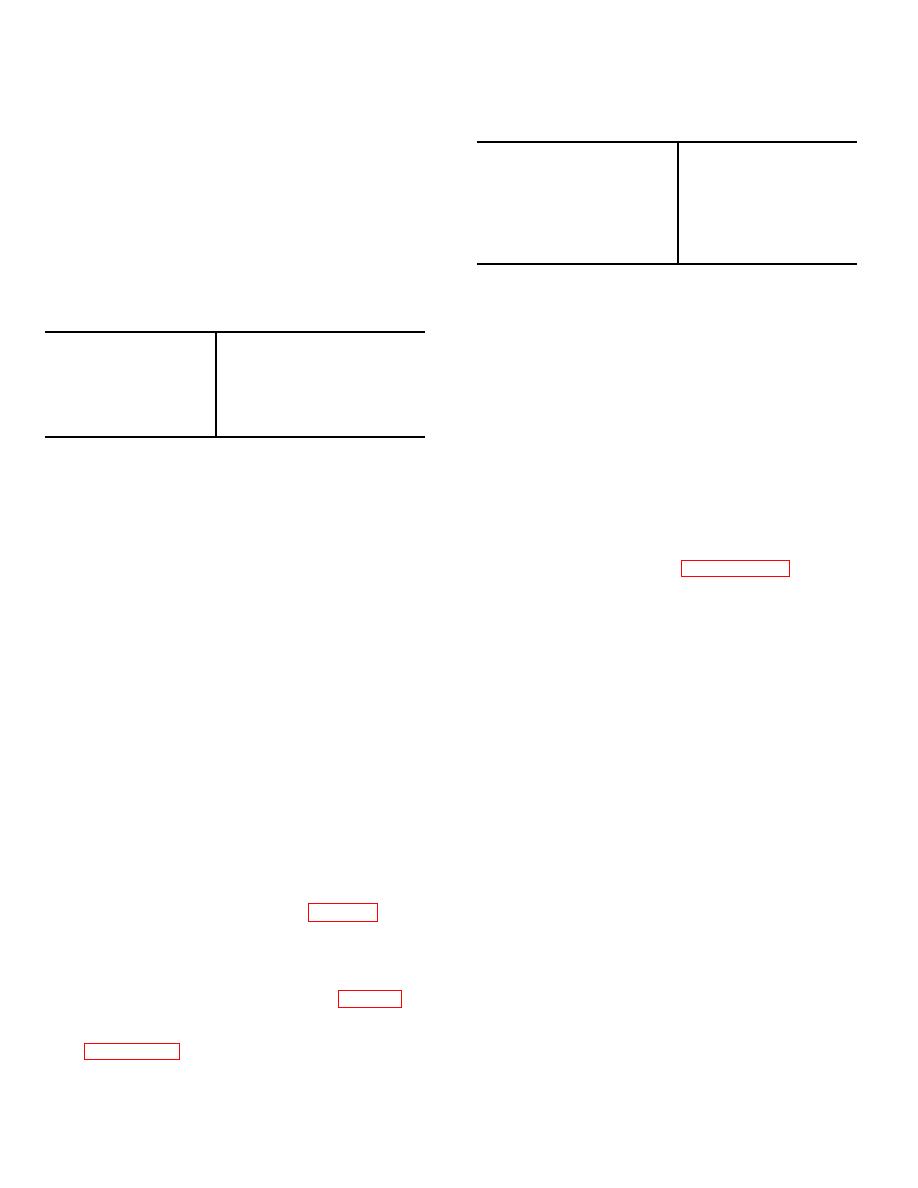
TM 5-814-2/AFM 88-11, Vol. 2
t = minimum time in minutes of one pumping
Table 5-2. Required submergence depth to prevent
cycle (time between successive pump
vortexing.
starts), or time required for a speed or
Velocity at diameter D, fps
S, feet
capacity change, and
2
1.0
q = pumping capacity, or increment in capacity
4
2.6
where one or more pumps are operating
5
3.4
and an additional pump is started, or where
6
4.5
pump speed is increased, in gallons per
7
5.7
minute
8
7.1
Constant or adjustable speed pumps driven by squirrel-
Larger, conventional type pump stations will normally be
cage induction motors will be designed for minimum
constructed with wet wells divided into two or more
cycle times as shown in the following table.
sections, or compartments, so that a portion of the
Table 5-1. Minimum pump cycle times.
station can be taken out of service for inspection or
More size, bhp
t, minutes
maintenance. Each compartment will have individual
Less than 20
10 to 15
suction pipes, and will be interconnected with slide or
20 to 100
15 to 20
sluice gates. The floor of the wet well will be level from
100 to 250
20 to 30
the wall to a point 12 to 18 inches beyond the outer
Over 250
as recommended by
edge of the suction bell, and then will be sloped upward
manufacturer
at a minimum 1:1 slope.
The storage volume calculated for small stations
(capacities less than 700 gpm) which utilize two identical
5-4.
Pump controls and instrumentation
constant speed pumps, may be reduced one half by
providing a control circuit to automatically alternate the
includes automatic and manual controls used to
pumps. The storage volume required for variable speed
sequence the operation of pumps, and alarms for
pumps will be based on providing sufficient time for a
indicating malfunctions in the pumping system.
change in capacity when a pump is started or stopped.
Automatic control of pumps will usually be based on the
When a pump is started, the motor must be ramped to
liquid level in the wet well. Paragraph 4-4 contains a
the desired speed, and the pumps already in operation
discussion of the various modes of pump operation,
must be reduced in speed. The time required for this is
pump control systems, and a description of level
usually less than 1 minute. A considerable amount of
detection devices. Manual control of pumps is always
storage is normally available in large sewers which
required in order to operate the pumps during
serve stations utilizing variable speed pumps. This
emergencies, for maintenance purposes, or when
volume may be considered in design by calculating
automatic systems fail. Manual override will be set to
backwater curves for the various operating levels. The
bypass the low level cut-off, but not the low level alarm.
maximum retention time in the wet well will not exceed
b. Selection of control points. A control range of at
30 minutes to prevent septicity.
least 3.0 feet is required between maximum and
c. Suction pipe connections. Pump suction piping
minimum liquid levels in the wet well. A minimum of 6
will be selected to provide a velocity of 4 to 6 feet per
inches will be required between pump control points
second. Pipe should be one or two sizes larger than the
used to start and stop successive pumps, or to change
pump suction nozzle. Vertical pumps installed in a dry
pump speeds. For small stations, the control range may
well which is adjacent to the wet well, will be fitted with a
be less, however control points will not be set closer
90 degree suction elbow, followed by an eccentric
than 3 inches.
reducer and a gate valve. The suction line will be
(1) Constant or adjustable speed pumps
extended through the wall into the wet well, and
require simple on-off switches to start or stop pumps, or
terminated with either a 90 or 45 degree flared elbow, or
to change from one speed step to the next.
an elbow with a flared fitting. The most commonly used
(2) Variable speed pumps require a more
piping arrangements are illustrated in figure 5-3, where D
complex control arrangement. The two basic types of
is the diameter of the flared inlet, and S is the
level control for variable speed operation are (a)
submergence depth.
variable level, and (b) constant level. For variable level
Adequate submergence of the suction inlet is critical to
control, a narrow band of control points is established in
prevent air from being drawn in by vortexing. Minimum
the wet well. Pump speed is then adjusted in steps by
required submergence depths are given in table 5-2 as a
the level detection system (usually a bubbler tube) as
function of velocity. The net positive suction head
the level varies. Pumps operate at maximum
(NPSH) will also be considered when determining S.
See paragraph 5-2c (2).
5-6



 Previous Page
Previous Page
